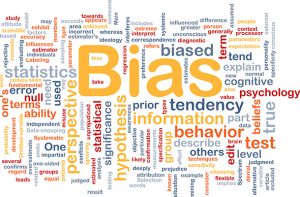 In a week marred by stories of law students, the future of the legal profession, promoting events with broad anti-immigrant stereotypes, it might feel like the legal landscape still needs to spend more time on explicit bias than implicit bias.
In a week marred by stories of law students, the future of the legal profession, promoting events with broad anti-immigrant stereotypes, it might feel like the legal landscape still needs to spend more time on explicit bias than implicit bias.
But implicit biases can often wreck more practical havoc than explicit biases because they operate below the radar, those snap decisions that imbue additional meaning not backed up by the facts at hand. Whether you do the unconscious work to find an innocent or guilty explanation for otherwise neutral facts can hinge on any number of implicit biases from racial and gender bias to biases against the college-educated or overweight.
Rosevelie Marquez Morales, Rhonda Hunter, and Tommy Wells held a panel discussion at the ABA Midyear meeting last week to discuss implicit bias and how to combat it. Generally, the path to overcoming the effects of implicit bias begins with removing the stigma — everyone has implicit biases buried in the recesses of their brains. Once people are comfortable admitting to themselves that these biases don’t necessarily make them bad people, they can begin the task of dealing with that bias through self-awareness.

[E-BOOK] 5 AI Productivity Hacks To Save Time And Streamline Your Law Firm
Discover five practical ways to harness AI and eliminate busywork—so you can focus more on your clients and less on repetitive tasks.
We had the opportunity to sit down with the panelists for a quick chat after their panel to discuss the subject and what it means for lawyers and judges in this On the Road podcast.